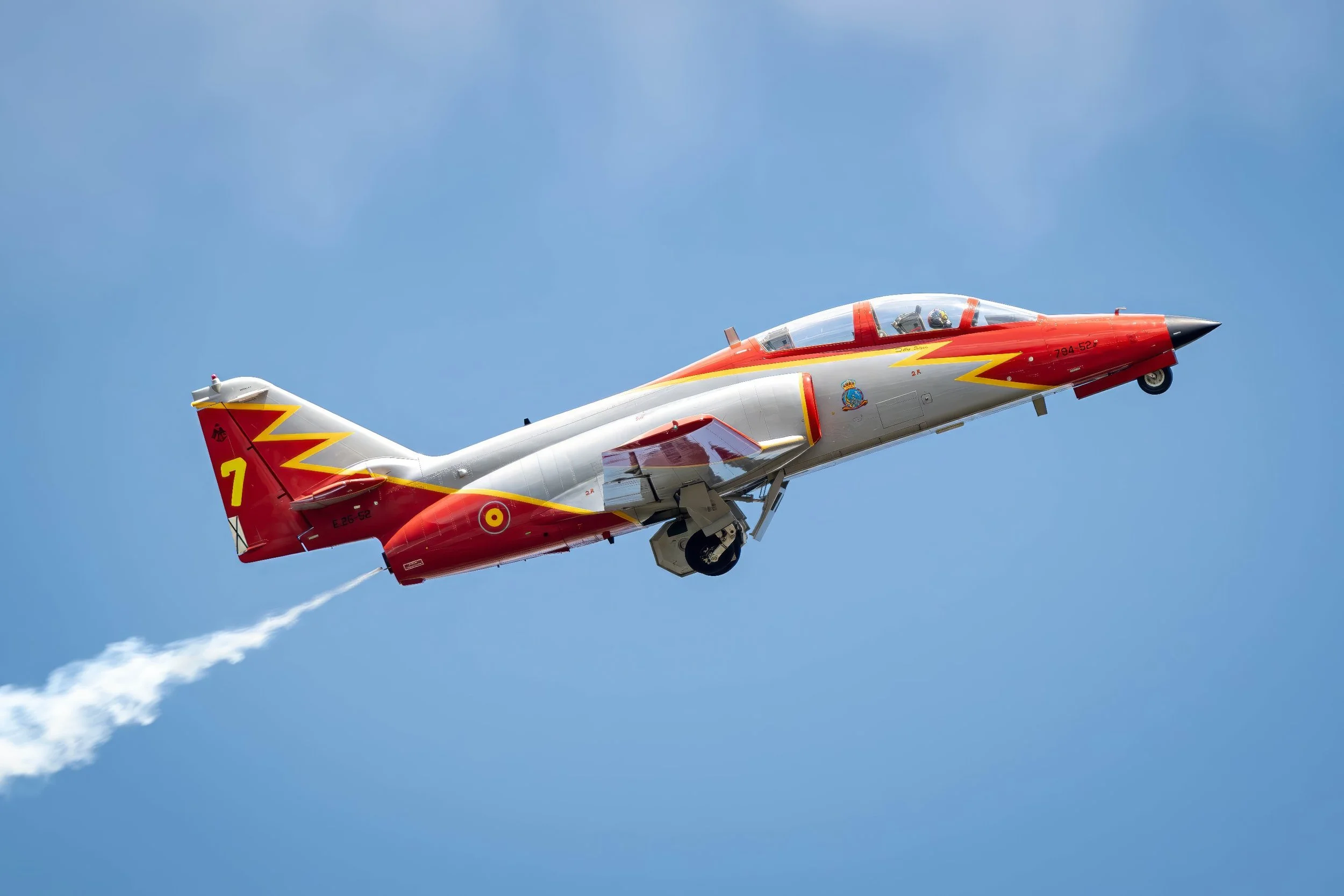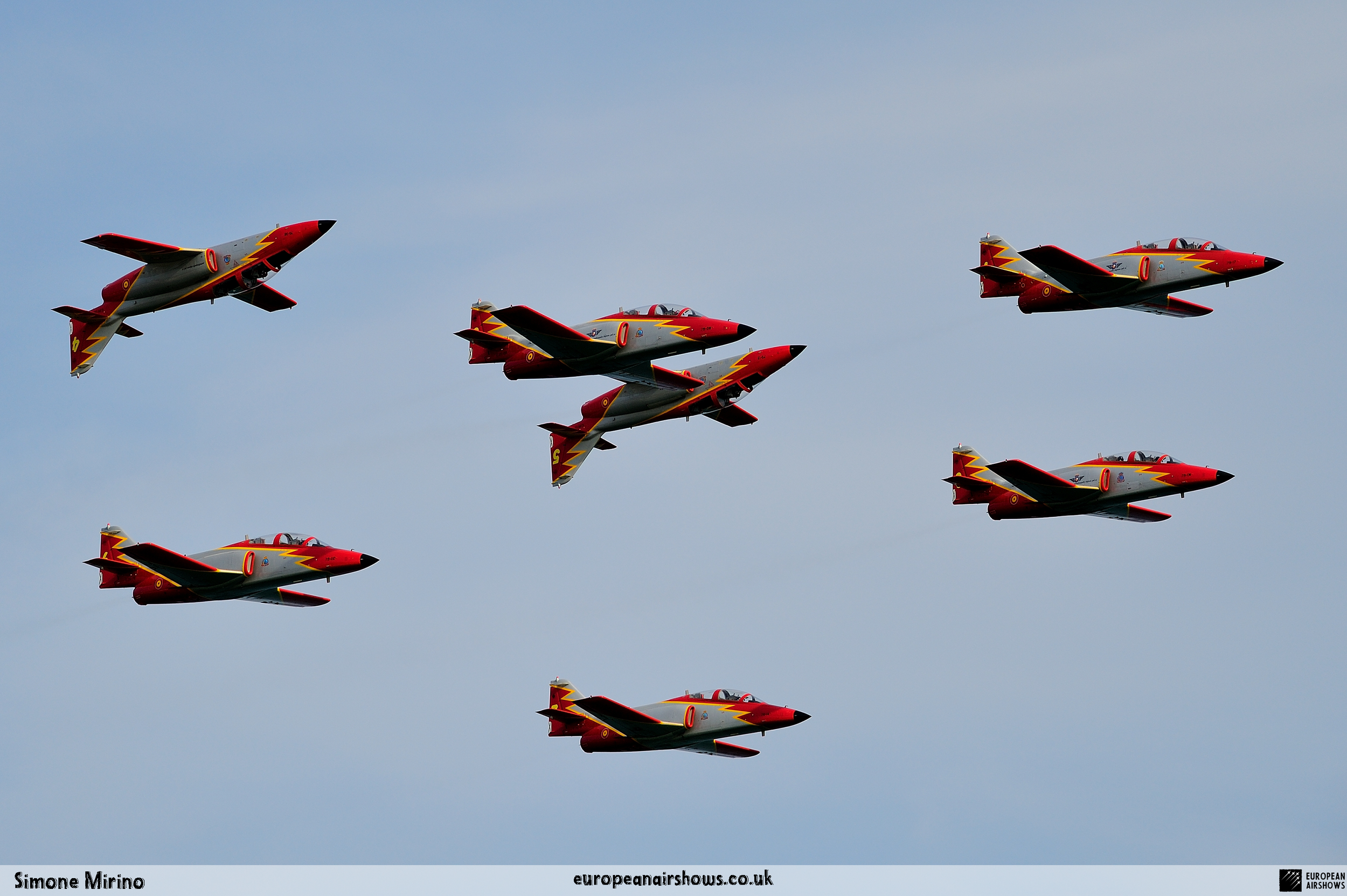
June 27 / CASA C-101 Aviojet first flight
First Flight 27 June 1977
CASA C-101 Aviojet
The CASA C-101 Aviojet is a Spanish jet trainer and light attack aircraft that has played a significant role in the training programs of several air forces around the world. The aircraft was developed by Construcciones Aeronáuticas SA (CASA), now part of Airbus, in response to a Spanish Air Force requirement for a new trainer to replace its ageing fleet of Hispano Saeta aircraft.
The development of the C-101 began in the early 1970s. CASA collaborated with several international companies, including Northrop and Garrett AiResearch, to design an aircraft that would meet both training and light attack roles. The prototype of the C-101, designated as the C-101A, made its maiden flight on June 27, 1977. The aircraft was designed with a low-wing monoplane configuration, a tandem seating arrangement for the instructor and student, and a single Garrett TFE731-2-2J turbofan engine, which provided a balance of performance and efficiency.
The Spanish Air Force was the first to adopt the C-101, designating it as the E.25 Mirlo. The aircraft entered service in 1980, providing a modern platform for pilot training with advanced avionics and systems that were in line with contemporary fighter aircraft. The C-101’s versatility also allowed it to be used in light attack and reconnaissance roles, equipped with hardpoints for carrying various weapons and external stores.
The C-101 Aviojet gained international attention, leading to export orders from several countries. Notably, the aircraft was adopted by the air forces of Chile, Honduras, and Jordan, among others. Each variant of the C-101 was tailored to the specific needs of the customer, with modifications to avionics, weapon systems, and other equipment. For instance, the Chilean Air Force’s version, known as the C-101CC, was equipped with enhanced avionics and weapon capabilities for a more robust light attack role.
One of the most iconic uses of the C-101 is by the Spanish Air Force’s aerobatic team, Patrulla Águila. The team has used the C-101 since 1985, showcasing the aircraft’s agility and performance in numerous airshows and events worldwide.
Throughout its operational life, the C-101 has undergone various upgrades to keep it relevant in modern training environments. These upgrades have included improvements to avionics, navigation systems, and the integration of new training aids to simulate advanced combat scenarios.
As of the early 21st century, the C-101 continues to serve in several air forces, although there are plans for replacement with more advanced trainer aircraft. Despite this, the C-101 Aviojet remains a testament to Spanish aerospace engineering and its contribution to military aviation training.
In summary, the CASA C-101 Aviojet has a storied history as a reliable and versatile trainer and light attack aircraft. Its development marked a significant achievement for the Spanish aerospace industry, and its service record across various international air forces underscores its effectiveness and adaptability.
C-101 Facts
Hollywood Cameo: The C-101 Aviojet made an appearance in the 1983 James Bond film “Octopussy.” In the movie, it was depicted as a fictional Acrostar Mini-Jet, showcasing its sleek design and agility in a thrilling aerial sequence.
Unique Smoke System: Patrulla Águila, the Spanish Air Force’s aerobatic team, uses a unique smoke system on their C-101s. This system can produce red and yellow smoke, representing the colours of the Spanish flag, adding a patriotic flair to their airshow performances.
Record-Breaking Development: The development and production timeline of the C-101 was remarkably swift. From the initial design phase to the first flight, the process took less than four years, a testament to the efficiency and dedication of the engineering team.
Modular Design: The C-101 features a modular design, allowing for quick and easy maintenance and upgrades. This design philosophy not only extends the aircraft’s service life but also enables operators to customize the aircraft for specific missions without extensive downtime.
Combat-Proven: Although primarily a trainer, the C-101 has seen combat. During the Cenepa War between Ecuador and Peru in 1995, the Ecuadorian Air Force used C-101s in combat missions, demonstrating the aircraft’s versatility and robustness under fire.
Versatile Training Platform: The C-101 is not just for basic training. It is capable of advanced pilot training, including weapons delivery, navigation, and formation flying. This versatility makes it a one-stop solution for many air forces, reducing the need for multiple types of training aircraft.
High Altitude Performance: The C-101 is designed to perform exceptionally well at high altitudes, making it suitable for operations in mountainous regions. This capability is particularly beneficial for countries with diverse topographies, such as Chile and Jordan.
Export Success: Despite being a Spanish aircraft, the C-101 has achieved significant export success. It has been sold to multiple countries across different continents, including Latin America, the Middle East, and Africa, highlighting its global appeal.
Digital Cockpit Upgrade: Some variants of the C-101 have been upgraded with digital cockpits, featuring multi-function displays (MFDs) and advanced avionics. These upgrades bring the aircraft in line with modern fighter jets, providing trainee pilots with relevant experience.
Enduring Legacy: Even as newer trainer aircraft are being developed, the C-101’s legacy endures. Its blend of simplicity, reliability, and versatility has made it a beloved aircraft among pilots and aviation enthusiasts alike, ensuring its place in aviation history for years to come.













